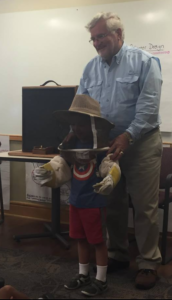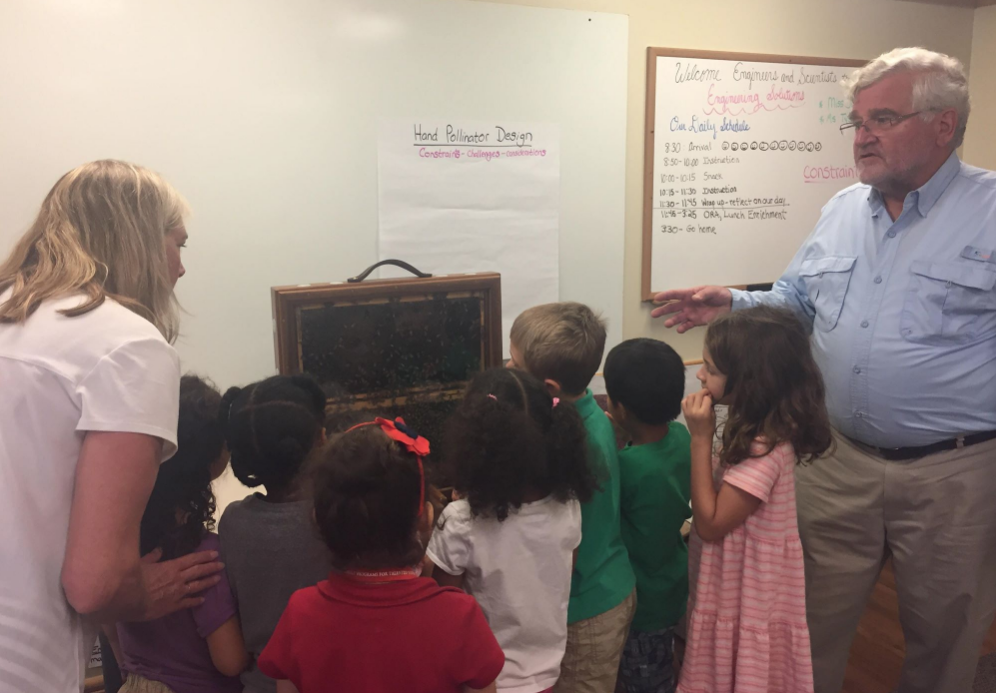Summer SAVY 2018: Session 3, Day 4 – Engineering Solutions (Rising 1st)
What a wonderful day we had today! Our beekeeper guest, Mr. Armstrong, from the Nashville Area Beekeepers Association (NABA), presented very engaging information to our engineers, and the students were so thorough and specific with their questions that there was not a bit of “beefuddlement” (pun intended), with a single student by the time Mr. Armstrong left. By far the two biggest highlights of Mr. Armstrong’s visit was getting to wear the protective gear that a beekeeper wears, and seeing the live bees in the hive!
After “beecoming” (pun intended), more knowledgeable about the natural pollination system, our young engineers considered how they could use their knowledge of pollination materials and their properties, and the Engineering Design Process to design and improve a hand pollinator for a model flower. In addition, students had to study four different flower models that presented different pollination system engineering constraints, and they had to choose which flower they would design a hand pollinator for. Flower model examples were the Bucket orchid (droops below the stem of the plant creating a cup or bucket that collects a fluid that is secreted from the plant to trap insects so they carry pollen out), the Dutchman’s pipe (flower has a large cupped opening that tapers to a thin pipe and small bulbous chamber at the base), the Jack-in-the-Pulpit (a base that sticks up in the middle of the flower for pollination), and the Poppy (flat, colorful flower with nectar found in the center). After selecting the type of flower for which to create a hand pollination design, students had to consider what design type and materials would drop off the most pollen to the plant they had chosen. Upon designing a model or diagram plan, and creating the prototype, students tested and improved their hand pollinators! I can’t wait for students to tell you about their hand pollinators, and the engineering process that made it possible, at the Open House on Friday!
Through this engineering design process, students learned how important models are to engineers and why they are useful. Students also gained real world experience about why it is important to ask questions, imagine possible solutions, carefully plan with models or diagrams, create a prototype, test and improve, and embrace the learning that comes from beautiful mistakes and failures. In addition, students have learned how they can positively impact the natural pollination system, and how to apply this learning to other systems. Yet, perhaps the most precious and important result from today was that students experienced the feeling of success in applying a disciplined process, and being BOLD enough to lean into the perseverance it takes to see their project to completion!
Our Open House is Friday between 9:00am-9:30am. I am looking forward to meeting you all, and I know you will “bee” amazed at what your “beeautiful” engineers have accomplished this week at SAVY!
Sincerely,
Ms. Tyson
Pictures With Our Special Guest



